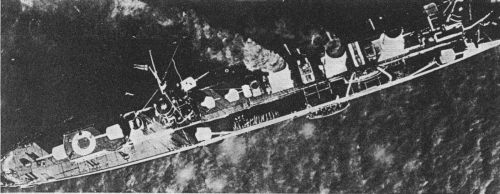

Königsberg 1918
| Name | No | Yard No | Builder | Laid down | Launched | Comp | Fate |
| Königsberg | 210 | Weser, Bremen | 1914 | 18.12.1915 | 12.8.1916 | discarded 5.1920, to France (Metz) | |
| Karlsruhe | 41 | KW Kiel | 1915 | 31.1.1916 | 15.11.1916 | interned 11.1918, scuttled 21.6.1919 | |
| Emden | 211 | Weser, Bremen | 1914 | 1.2.1916 | 16.12.1916 | interned 11.1918, beached 21.6.1919 | |
| Nürnberg | 595 | Howaldtswerke, Kiel | 1915 | 14.4.1916 | 15.2.1917 | interned 11.1918, beached 21.6.1919 |
|
Displacement normal, t |
5440 |
|
Displacement full, t |
7125 |
|
Length, m |
151.4 oa 145.8 wl |
|
Breadth, m |
14.2 |
|
Draught, m |
6.32 deep load |
|
No of shafts |
2 |
|
Machinery |
Königsberg, Emden, Nürnberg: 2 Marine steam turbines, 12 Marine boilers Karlsruhe: 2 sets Marine semi-geared steam turbines, 12 Marine boilers |
|
Power, h. p. |
31000 |
|
Max speed, kts |
27.5 |
|
Fuel, t |
coal 1340 + oil 500 |
|
Endurance, nm(kts) |
4850(12) |
|
Armour, mm |
belt: 60 - 18, deck: 40 - 20, slopes: 60 - 40, glacises: 100, CT: 100, shields: 50, mine hold: 30 |
|
Armament |
8 x 1 - 149/42 SK L/45 C/09, 2 x 1 - 88/45 SK L/45 C/13, 2 - 500 TT (beam), 2 x 1 - 500 TT, 200 mines |
|
Complement |
475 |
Project history: Built under the 1913 programme the four units of this class were given the names of the commerce raiding cruisers sunk in the early part of the war. The second Emden displayed an Iron Cross on her stemhead in honour of her illustrious predecessor. On trials they all exceeded their designed power by a considerable margin (Karlsruhe with geared HP turbines achieved 55,700shp) but it meant only a 0.25kt above the design speed as the trials were in shallow water. In deep water 29kts would have been exceeded.
Ship protection: Main belt was 60mm thick abreast machinery and 18mm at ship ends, it was closed fwd by 40mm bulkhead. 40mm protective deck above machinery was connected with the belt by 60mm slopes, ship ends were protected by 20mm deck with 40mm slopes. CT had 100mm sides and 20mm roof, guns had 50mm shields and 20mm protection of ammunition hoists. Mine holds were protected by 30mm sides and 20mm roof.
Modernizations: None.
Naval service: Königsberg (ii) served with the Scouting Forces, became a French reparation after the war and was renamed Metz; she was broken up in 1936 at Brest. Karlsruhe (ii) served with the Scouting Forces and was scuttled at Scapa Flow on 21 June 1919. Emden (ii) served with the Scouting Forces and was interned at Scapa Flow, where she became flagship of Rear-Admiral Ludwig von Reuter on 25 March 1919. She was beached in a sinking condition after the scuttling of the German High Seas Fleet and finally became a French war reparation. As the damage was too great she did not see active service but was used as an explosive trials target and finally scrapped at Caen in 1926. Nürnberg (ii) was beached at Scapa Flow after scuttling and used as a gunnery and explosives target. She was finally sunk on 7 July 1922 off the Isle of Wight.

Königsberg 1917
© Ivan Gogin, 2014